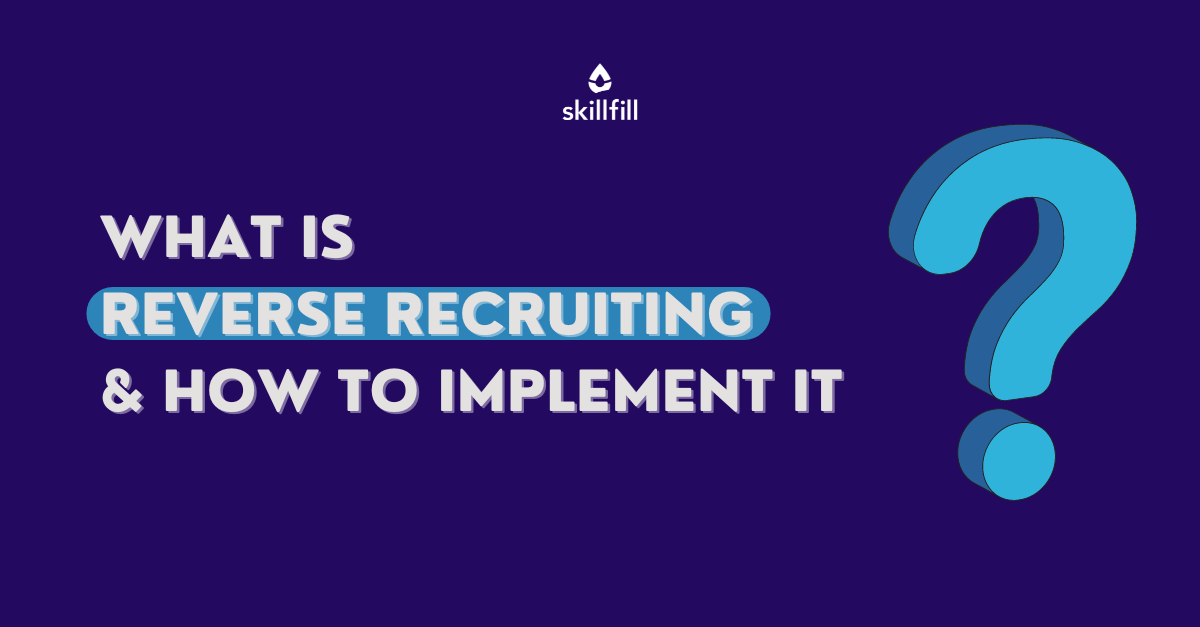Boost Your Hiring Game With Strategic Reverse Recruiting Techniques
In the realm of ability procurement, traditional recruiting methods have long been the standard. As the landscape of hiring advances, organizations are significantly turning to innovative approaches such as calculated reverse recruiting to gain a competitive side in protecting top skill. This shift in attitude requires a thoughtful reconsideration of exactly how companies approach the working with process, focusing on drawing in easy candidates instead of only relying upon active work candidates. By flipping the script and proactively engaging with people who may not be proactively looking for brand-new chances, organizations open themselves as much as a swimming pool of untapped capacity. This calculated approach not only broadens the skill pipeline however also grows a more varied and proficient labor force.
Understanding Strategic Reverse Recruiting
Strategically leveraging the principle of reverse recruiting can significantly boost your company's skill purchase method. By flipping the traditional recruitment technique on its head, reverse recruiting involves proactively looking for out and attracting passive candidates that may not be proactively searching for new possibilities. This positive method allows firms to take advantage of a swimming pool of high-grade ability that may not be available through traditional task postings alone.
Comprehending the intricacies of tactical reverse recruiting is vital for its effective application. It requires a deep understanding of the industry landscape, competitor evaluation, and the particular ability that remain in high demand. reverse recruiting. By conducting extensive study and leveraging market understandings, organizations can recognize and engage with top talent in a more tailored and targeted way

Benefits of Reverse Hiring
Reverse recruiting provides an unique technique to talent acquisition by proactively involving with easy prospects who might not be proactively seeking work possibilities. One of the vital benefits of reverse recruiting is the capacity to target prospects who are currently used and pleased in their existing roles.

Key Parts of Reverse Hiring
Having explored the advantages of reverse recruiting in targeting top entertainers who are web content in their present functions, it is necessary to understand the crucial elements that make this strategy successful in bring in easy candidates. The first vital part is constructing a solid employer brand. Easy prospects are frequently not actively seeking brand-new chances, so having a positive online reputation as an employer can ignite their interest. Leveraging social media platforms and employer evaluation websites to showcase company society and values can assist in this regard.
One more critical part is individualized outreach. Given that easy prospects are not proactively searching for tasks, common employment messages are most likely to be ignored. Customizing outreach efforts to highlight exactly how the particular skills and experiences of the candidate straighten with the firm's demands can dramatically raise the possibilities of getting their attention.
Moreover, fostering partnerships with easy candidates in time is vital. Routinely engaging with them via networking occasions, industry conferences, or also periodic check-ins can help build relationship and depend on, making them a lot more receptive to possible task opportunities in the future. By incorporating these vital elements into reverse recruiting approaches, companies can efficiently bring in and employ top ability from the pool of easy candidates.
Applying Reverse Recruiting Approaches

Furthermore, developing pop over to this site engaging employer branding and showcasing a positive firm culture can assist bring in passive candidates and urge them to consider new job possibilities. Building a skill community or talent pipe can also be valuable in nurturing connections with easy prospects over time, keeping them involved and interested in potential future functions within the company. On the whole, implementing reverse recruiting techniques needs an aggressive and personalized method to skill purchase, concentrating on developing purposeful links with passive prospects to drive long-lasting employment success.
Gauging Success backwards Hiring
Reliable dimension of success in hiring approaches requires a comprehensive assessment of essential performance signs and metrics to evaluate the effect and performance of talent procurement here initiatives. In the context of reverse recruiting, details metrics can give beneficial understandings right into the efficiency and effectiveness of the method. One vital metric is the high quality of candidates engaged through reverse recruiting networks. By gauging the conversion price of easy prospects right into active applicants or hires, companies can assess the efficiency of their reverse recruiting efforts.
Keeping an eye on retention prices among candidates hired through reverse techniques can give insights into the long-lasting success of the strategy. High retention rates suggest that the candidates sourced with reverse recruiting are an excellent fit for the company, contributing positively to its general skill swimming pool.
Conclusion
Finally, calculated reverse recruiting provides a special strategy to hiring that focuses on attracting top skill with aggressive involvement and relationship-building. By leveraging this method, organizations can gain an one-upmanship in the skill market and enhance their employment results. It is essential to comprehend the benefits, essential elements, and methods of reverse recruiting to successfully apply and gauge success in this cutting-edge strategy to working with.